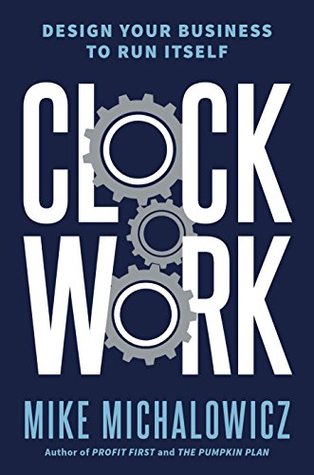More on this book
Community
Kindle Notes & Highlights
if they don’t know (or care), they can’t actively protect it. In an emergency room, the QBR is very likely the role of diagnosing an emergency medical issue and determining the proper course of action.
To make sure the QBR is protected, a well-run ER makes sure the doctors who serve the QBR do nothing but identify the medical issue and prescribe a course of action. If a doctor is filing papers, directing staff, or idly waiting on the patient to be assigned a room, he or she is not protected, and therefore the QBR itself is not protected.
That’s why, once you’ve identified the QBR, everyone else on your team must prioritize protecting the QBR so that the role can be fulfilled. Then, and only then, can they focus on their Primary Job.
The strategies in this chapter will help you create a plan for protecting the QBR.
The serving staff makes sure that when you arrive at your table the food is ready to go. They
actually serve the table before you get seated.
On a blank sheet of paper, write the QBR in the center and draw a circle around it, like a bull’s-eye. Remember, we identified the QBR in the last chapter using the sticky note exercise. You did that, right? If not, go back and complete that immediately. I’ll wait. Look at the five other sticky notes you created—the ones that ultimately were not your QBR—and the time you spend on each task during any given week. You can pull the data about time allocation from the Time Analysis you did in chapter two. Review how much time you spend on each of these
Each task’s distance (the spoke) from the QBR represents the time it takes.
Trash, Transfer, or Trim: Now, starting with the tasks that are the furthest away from the QBR, determine for each whether you can trash it, transfer it to someone else (delegate), or trim it. For example, you might trash writing a daily update email that no one on your team seems to read (or need), transfer social media management to a freelancer who specializes in that area, and trim your “introductory free consults” from
one hour to thirty minutes.
Keep going through the QBR hub-and-spoke model, working your way closer and closer to the QBR. You need to move as many tasks as possible into trash, transfer, or trim. All the time you recover in the process should immediately be reserved for further serving the
QBR. As you put this into action, you’ll see that elevating the QBR dramatically elevates your entire business.
First, evaluate a task and determine whether you can trash it. Does it support a necessary objective of the business?
not everything is necessary in a business.
if you are unsure, just stop it for a period of time to see if there are consequences. No consequence = not needed. Trash it.
Transfer work down to the most inexpensive resources and empower the new owner(s) of the task to achieve the intended outcome more efficiently.
Cool Beans Jeans LLC.
We do this by creating systems to free the people who are serving the QBR from having to do anything that would ever make the QBR secondary.
he is using an expensive resource (himself) to do inexpensive work.
Remember Cyndi Thomason’s story? After following the Surge methods for rapid niche-based growth, her business grew so fast she became overwhelmed and exhausted. Having more demand than you can serve (right now) is a good problem to have, but it is exhausting. We did the sticky note exercise and she found her QBR: communication with clients. She then did the hub-and-spoke diagram and removed the tasks that took her away from the QBR. Then, she immediately set about freeing herself from serving the QBR by getting her team to serve it themselves.
When multiple things are pulling for your time and attention, always prioritize the QBR over everything else.
The demand on Cyndi’s time plummeted and her company’s efficiency skyrocketed.
Her employees weren’t coming to her with ways to further improve the company and their services, even though they were the ones doing the work.
Marie has made a conscious choice in continuing to serve the QBR.
The day Tony Robbins, or Marie Forleo, or you (if you decide to solely serve the QBR) decide to call it quits, the business quits.
When you serve the QBR, you are the heart of the organization. When you choose to have others serve the QBR, you become the soul of the organization.
Now it is time to clear the plates for the people serving the QBR. Take the easiest and most distracting thing off their plate. Even if it’s just one thing, the impact can be huge. Consider how your team is working currently. Do you have your most skilled people doing unskilled work? If so, that approach is costing you. Use the trash, transfer, and trim method to move work to the appropriate people. Usually you will find most of a company’s work is highly repeatable and requires little
You, in fact, have every single system for your business already. Every single stinking thing.
The goal is not to create systems; the goal is to capture systems—and do it easily.
Now let’s talk about the simple method that does work. The far better way to create a system for a process is to capture the process as you do it. The magic here is that you actually get the work done while creating the system for others to follow.


